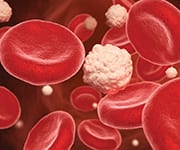Life Extension Magazine®
With age, a sedentary lifestyle, or a diet high in saturated fat or refined carbohydrates and simple sugars, our cells become insulin resistant.
This causes blood glucose levels to remain high.
Chronically elevated fasting blood glucose is a serious danger.
It can lead to long-term consequences such as heart disease and stroke, dementia, cancer, accelerated aging, and premature death.1-8
Life Extension believes everyone should strive for optimal glucose control, regardless of whether or not they are diabetic.
This means taking action to improve your glycemic control if your fasting glucose is over 85 mg/dL or your HbA1C is higher than 5.0%.
Doctors generally prescribe glucose-lowering drugs only to people who have been diagnosed as diabetic. That leaves millions of Americans at risk.
Scientists have found several nutrients that can safely promote healthy blood sugar levels and insulin sensitivity.
The Risks of Elevated Glucose
Insulin resistance occurs when the body’s cells no longer respond efficiently to the hormone insulin. As a result, cells cannot easily take up glucose from the blood and blood sugar levels rise.
Insulin resistance becomes more common as we age. It usually develops without symptoms, allowing blood glucose levels to creep to dangerously high levels over time.
Insulin resistance is considered a causative factor of metabolic syndrome. This condition is defined as the presence of at least three of the following:9
- High fasting blood sugar,
- Abdominal obesity,
- High blood pressure,
- Low HDL (“good”) cholesterol, and
- High triglycerides.
Epidemic Health Crisis
The results from a nutritional survey in the United States found that, by 2016, over half of adults age 60 and over had metabolic syndrome.10 These people have a higher risk of cardiovascular disease, type II diabetes, non-alcoholic fatty liver disease and liver cancer, chronic kidney disease, gout, sleep apnea, cataracts, retinopathy, and other eye pathologies, and premature death.11-13
Many people with metabolic syndrome have elevated blood sugar levels but their glucose numbers are below the threshold for a diagnosis of diabetes.
Silent Diabetes
Prediabetes is the term to describe higher than normal blood sugar that is lower than the diabetic threshold.14 It has been estimated that more than 470 million people worldwide will be prediabetic by 2030.14,15
Up to 70% of people with prediabetes will eventually develop diabetes, according to an expert panel of the American Diabetes Association.14,15
Diet and other lifestyle interventions can help reduce the risk of progressing to diabetes.16 But in anyone with high blood sugar, lasting damage can occur on a daily basis.
To meet this challenge, scientists identified several nutrients that work in different ways to lower blood glucose levels:
- Cinnamon,
- Chromium,
- Amla,
- Shilajit, and
- Iodine-rich seaweed.
Cinnamon Reduces Glucose
Cinnamon has been used to help manage conditions including obesity, metabolic syndrome, and diabetes.
Scientists identified a purified, water-soluble, cinnamon extract that demonstrates glucose-lowering properties.17-19
In human trials, oral supplementation with a water-soluble cinnamon extract was shown to:20-23
- Lower fasting blood glucose,
- Enhance insulin sensitivity,
- Decrease systolic blood pressure,
- Reduce total and LDL (“bad”) cholesterol, and
- Improve lean mass body composition.
Cinnamon has been shown to impact these metabolic parameters in more than one way.
In one preclinical model, a water-soluble cinnamon extract increased production of glucose transport molecules known as GLUT4, which enable cells to take up glucose from blood plasma in the presence of insulin.24
Without effective GLUT4 transporters, blood glucose can steadily rise, eventually damaging tissues through a process known as glycation, and also by inducing insulin resistance.25,26
Preclinical data indicate that cinnamon activates and also increases the production of metabolic sensors called PPARs,27 mirroring a key mechanism of some antidiabetic drugs.28 Increased expression of PPARs helpspromote insulin sensitivity, thereby improving glucose uptake.29
What you need to know
Natural Ways to Control Glucose
- With age, insulin resistance and elevated glucose levels become more common. These conditions often lead to metabolic syndrome and prediabetes, increasing risk for heart disease, dementia, stroke, and premature death.
- Cinnamon increases the body’s ability to take up glucose from the blood and transport it to cells, reducing blood glucose and increasing insulin sensitivity.
- Chromium, amla, and shilajit all support healthy cellular glucose metabolism.
- Iodine-rich brown seaweed blocks the conversion of starches into glucose and increases insulin sensitivity, thereby promoting glucose uptake by cells, further reducing blood glucose levels.
- Together, these nutrients can help maintain healthy glucose levels and prevent the damage elevated levels can do.
Chromium Fights High Glucose
More than 60 years ago, scientists established that having low levels of the mineral chromium contributes to high blood sugar.30
Studies show that chromium deficiency is associated with insulin resistance and diabetes.31,32
One study found that chromium deficiency is common in people with prediabetes.33,34
In type II diabetics, chromium supplementation has been found to significantly:31
- Improve blood sugar levels,
- Lower HbA1c,
- Raise HDL cholesterol, and
- Lower triglycerides.
Chromium is believed to work by improving intracellular signaling systems that are critical to cells’ ability to detect and respond to elevated glucose levels in the blood. It does this by activating glucose-transporting GLUT4 molecules.35
Amla and Shilajit Optimize Chromium Benefits
Two organic compounds have been identified that deliver free-radical scavenging activity and provide glucose-lowering effects: amla and shilajit.
Amla is an herb also known as Indian gooseberry. It has been shown to lower blood glucose in diabetic animals and humans.36,37
Shilajit is a Himalayan nutrient that has been used for centuries. It is rich in fulvic acid, an organic compound that is thought to account for the many medicinal and biological properties of shilajit. It has been used in the management of diabetes and many gastrointestinal conditions like diarrhea, gastritis, ulcers, and more.38-40
Combining chromium with amla and shilajit promotes removal of glucose from the bloodstream and efficient use of glucose within cells.
In a study of type II diabetics, supplementation with a chromium, amla, and shilajit complex, in addition to current medication, compared to placebo, resulted in:41
- Better after-meal glucose control,
- Decreases in C-reactive protein (marker of inflammation), and
- Reductions in LDL levels.
Brown Seaweed Stops Conversion of Carbs to Sugars
Another way to improve glucose control is to limit the amount of glucose the body has to process in the first place.
Brown seaweed blunts the conversion of starches into glucose in the gastrointestinal tract by blocking two enzymes needed for this conversion, alpha-amylase and alpha-glucosidase.42,43 As a result, less glucose is absorbed into the bloodstream.
Brown seaweed is also rich in iodine, and animal studies show that oral iodine reduces glucose.44,45
In clinical trials, brown seaweed extracts:46-48
- Lowered fasting glucose levels,
- Reduced insulin levels and increased insulin sensitivity (when taken before eating carbohydrate-rich bread),
- Lowered A1c readings, and
- Improved after-meal cognitive function.
Seaweed, cinnamon, chromium, amla, and shilajit all help support healthy glucose levels, warding off the damage elevated blood sugar can do.
Summary
Aging is associated with increased insulin resistance and elevated glucose levels and with greater risk of diabetes, heart disease, stroke, cancer, and premature death.
The nutrients cinnamon, chromium, amla, shilajit, and seaweed help the body transport and burn glucose, block the conversion of carbohydrates into glucose, and work in other ways to reduce blood glucose levels and optimize energy production.
These innovative compounds can help people maintain healthy blood glucose levels well into older age.
If you have any questions on the scientific content of this article, please call a Life Extension Wellness Specialist at 1-866-864-3027.
References
- Ahmadieh H, Azar ST. Liver disease and diabetes: association, pathophysiology, and management. Diabetes Res Clin Pract. 2014 Apr;104(1):53-62.
- Szablewski L. Diabetes mellitus: influences on cancer risk. Diabetes Metab Res Rev. 2014 Oct;30(7):543-53.
- Available at: https://www.merckmanuals.com/professional/endocrine-and-metabolic-disorders/diabetes-mellitus-and-disorders-of-carbohydrate-metabolism/diabetes-mellitus-dm. Accessed January 24, 2022.
- Del Bene A, Ciolli L, Borgheresi L, et al. Is type 2 diabetes related to leukoaraiosis? an updated review. Acta Neurol Scand. 2015 Sep;132(3):147-55.
- Huang Y, Cai X, Qiu M, et al. Prediabetes and the risk of cancer: a meta-analysis. Diabetologia. 2014 Nov;57(11):2261-9.
- Kim B, Backus C, Oh S, et al. Hyperglycemia-induced tau cleavage in vitro and in vivo: a possible link between diabetes and Alzheimer’s disease. J Alzheimers Dis. 2013;34(3):727-39.
- Fowler MJ. Microvascular and Macrovascular Complications of Diabetes. Clinical Diabetes. 2008;26(2):77-82.
- Available at: https://www.cdc.gov/diabetes/basics/diabetes.html. Accessed January 24, 2022.
- Available at: https://www.heart.org/en/health-topics/metabolic-syndrome/about-metabolic-syndrome. Accessed January 31, 2022.
- Hirode G, Wong RJ. Trends in the Prevalence of Metabolic Syndrome in the United States, 2011-2016. JAMA. 2020 Jun 23;323(24):2526-8.
- Mayans L. Metabolic Syndrome: Insulin Resistance and Prediabetes. FP Essent. 2015 Aug;435:11-6.
- Available at: https://www.uptodate.com/contents/metabolic-syndrome-insulin-resistance-syndrome-or-syndrome-x. Accessed January 24, 2022.
- Lima-Fontes M, Barata P, Falcao M, et al. Ocular findings in metabolic syndrome: a review. Porto Biomed J. 2020 Nov-Dec;5(6):e104.
- Cai X, Zhang Y, Li M, et al. Association between prediabetes and risk of all cause mortality and cardiovascular disease: updated meta-analysis. BMJ. 2020 Jul 15;370:m2297.
- Tabak AG, Herder C, Rathmann W, et al. Prediabetes: a high-risk state for diabetes development. Lancet. 2012 Jun 16;379(9833):2279-90.
- American Diabetes A. 3. Prevention or Delay of Type 2 Diabetes: Standards of Medical Care in Diabetes-2020. Diabetes Care. 2020 Jan;43(Suppl 1):S32-S6.
- Lu Z, Jia Q, Wang R, et al. Hypoglycemic activities of A- and B-type procyanidin oligomer-rich extracts from different Cinnamon barks. Phytomedicine. 2011 Feb 15;18(4):298-302.
- Qin B, Panickar KS, Anderson RA. Cinnamon: potential role in the prevention of insulin resistance, metabolic syndrome, and type 2 diabetes. J Diabetes Sci Technol. 2010 May 1;4(3):685-93.
- Anderson RA, Broadhurst CL, Polansky MM, et al. Isolation and characterization of polyphenol type-A polymers from cinnamon with insulin-like biological activity. J Agric Food Chem. 2004 Jan 14;52(1):65-70.
- Mang B, Wolters M, Schmitt B, et al. Effects of a cinnamon extract on plasma glucose, HbA, and serum lipids in diabetes mellitus type 2. Eur J Clin Invest. 2006 May;36(5):340-4.
- Ziegenfuss TN, Hofheins JE, Mendel RW, et al. Effects of a water-soluble cinnamon extract on body composition and features of the metabolic syndrome in pre-diabetic men and women. J Int Soc Sports Nutr. 2006 Dec 28;3(2):45-53.
- Anderson RA. Chromium and polyphenols from cinnamon improve insulin sensitivity. Proc Nutr Soc. 2008 Feb;67(1):48-53.
- Anderson RA, Zhan Z, Luo R, et al. Cinnamon extract lowers glucose, insulin and cholesterol in people with elevated serum glucose. J Tradit Complement Med. 2016 Oct;6(4):332-6.
- Cao H, Polansky MM, Anderson RA. Cinnamon extract and polyphenols affect the expression of tristetraprolin, insulin receptor, and glucose transporter 4 in mouse 3T3-L1 adipocytes. Arch Biochem Biophys. 2007 Mar 15;459(2):214-22.
- Tripathy D, Merovci A, Basu R, et al. Mild Physiologic Hyperglycemia Induces Hepatic Insulin Resistance in Healthy Normal Glucose-Tolerant Participants. J Clin Endocrinol Metab. 2019 Jul 1;104(7):2842-50.
- Singh VP, Bali A, Singh N, et al. Advanced glycation end products and diabetic complications. Korean J Physiol Pharmacol. 2014 Feb;18(1):1-14.
- Sheng X, Zhang Y, Gong Z, et al. Improved Insulin Resistance and Lipid Metabolism by Cinnamon Extract through Activation of Peroxisome Proliferator-Activated Receptors. PPAR Res. 2008;2008:581348.
- Miyazaki Y, Mahankali A, Matsuda M, et al. Improved glycemic control and enhanced insulin sensitivity in type 2 diabetic subjects treated with pioglitazone. Diabetes Care. 2001 Apr;24(4):710-9.
- Medagama AB. The glycaemic outcomes of Cinnamon, a review of the experimental evidence and clinical trials. Nutr J. 2015 Oct 16;14:108.
- Geochemistry and the Environment: Volume I: The Relation of Selected Trace Elements to Health and Disease. Washington, DC: The National Academies Press; 1974.
- Suksomboon N, Poolsup N, Yuwanakorn A. Systematic review and meta-analysis of the efficacy and safety of chromium supplementation in diabetes. J Clin Pharm Ther. 2014 Jun;39(3):292-306.
- Anderson RA, Cheng N, Bryden NA, et al. Elevated intakes of supplemental chromium improve glucose and insulin variables in individuals with type 2 diabetes. Diabetes. 1997 Nov;46(11): 1786-91.
- Rafiei R, Habyby Z, Fouladi L, et al. Chromium level in prediction of diabetes in pre-diabetic patients. Adv Biomed Res. 2014;3:235.
- Chen S, Jin X, Shan Z, et al. Inverse Association of Plasma Chromium Levels with Newly Diagnosed Type 2 Diabetes: A Case-Control Study. Nutrients. 2017 Mar 17;9(3).
- Chen G, Liu P, Pattar GR, et al. Chromium activates glucose transporter 4 trafficking and enhances insulin-stimulated glucose transport in 3T3-L1 adipocytes via a cholesterol-dependent mechanism. Mol Endocrinol. 2006 Apr;20(4):857-70.
- D’Souza J J, D’Souza P P, Fazal F, et al. Anti-diabetic effects of the Indian indigenous fruit Emblica officinalis Gaertn: active constituents and modes of action. Food Funct. 2014 Apr;5(4):635-44.
- Kapoor MP, Suzuki K, Derek T, et al. Clinical evaluation of Emblica Officinalis Gatertn (Amla) in healthy human subjects: Health benefits and safety results from a randomized, double-blind, crossover placebo-controlled study. Contemp Clin Trials Commun. 2020 Mar;17:100499.
- Agarwal SP, Khanna R, Karmarkar R, et al. Shilajit: a review. Phytother Res. 2007 May;21(5):401-5.
- Schepetkin I, Khlebnikov A, Kwon BS. Medical drugs from humus matter: Focus on mumie. Drug Development Research. 2002;57(3):140-59.
- Schepetkin IA, Xie G, Jutila MA, et al. Complement-fixing activity of fulvic acid from Shilajit and other natural sources. Phytother Res. 2009 Mar;23(3):373-84.
- Biswas T, Polley G, Pandit S, et al. Effects of adjunct therapy of a proprietary herbo-chromium supplement in type 2 diabetes: A randomized clinical trial. Int J Diab Dev Ctries. 2010;30(3):153-61.
- Lordan S, Smyth TJ, Soler-Vila A, et al. The alpha-amylase and alpha-glucosidase inhibitory effects of Irish seaweed extracts. Food Chem. 2013 Dec 1;141(3):2170-6.
- Zhang J, Tiller C, Shen J, et al. Antidiabetic properties of polysaccharide- and polyphenolic-enriched fractions from the brown seaweed Ascophyllum nodosum. Can J Physiol Pharmacol. 2007 Nov;85(11):1116-23.
- Kang MC, Kang N, Kim SY, et al. Popular edible seaweed, Gelidium amansii prevents against diet-induced obesity. Food Chem Toxicol. 2016 Apr;90:181-7.
- Kang MC, Kang N, Ko SC, et al. Anti-obesity effects of seaweeds of Jeju Island on the differentiation of 3T3-L1 preadipocytes and obese mice fed a high-fat diet. Food Chem Toxicol. 2016 Apr;90:36-44.
- Paradis ME, Couture P, Lamarche B. A randomised crossover placebo-controlled trial investigating the effect of brown seaweed (Ascophyllum nodosum and Fucus vesiculosus) on postchallenge plasma glucose and insulin levels in men and women. Appl Physiol Nutr Metab. 2011 Dec;36(6):913-9.
- Derosa G, Cicero AFG, D’Angelo A, et al. Ascophyllum nodosum and Fucus vesiculosus on glycemic status and on endothelial damage markers in dysglicemic patients. Phytother Res. 2019 Mar;33(3):791-7.
- Haskell-Ramsay CF, Jackson PA, Dodd FL, et al. Acute Post-Prandial Cognitive Effects of Brown Seaweed Extract in Humans. Nutrients. 2018 Jan 13;10(1).








